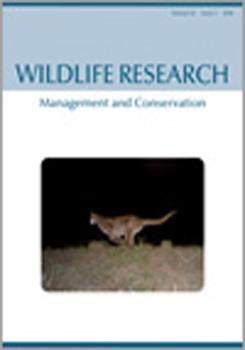Context. Vehicle strike is a major issue where wildlife habitat is intersected by busy roads. Near Threatened Lumholtz’s tree-kangaroo (Dendrolagus lumholtzi) is a large (5–10 kg) semi-arboreal mammal found in populated rural and forested areas of north-eastern Australia. Warning signs, rope bridges and underpasses have not prevented ∼20 animals being killed on the road each year.
Aims. To identify factors influencing Lumholtz’s tree-kangaroo vehicle strike to help inform mitigation options.
Methods. Citizen sightings (1998–2000) and 90 road-kills collected over 4.5 years on the Atherton Tablelands, Australia, were examined to determine the causes of vehicle strike in Lumholtz’s tree-kangaroo. The spatial distributions of sightings and road-kills were characterised using nearest-neighbour analysis, and the relationship between them was determined using a Bayesian approach that accounted for spatial autocorrelation. Gender, age, weight, season, rainfall, road and verge characteristics, traffic volumes, speed limits and mitigation measures were recorded to assess their influence on road-kill risk. Adequacy of speed limits to prevent collisions along road sections with more than four road-kills per 8 km (hazard zones) was assessed from visibility and stopping distances.
Key results. Vehicle strikes mainly affected male tree-kangaroos (2–5 years, 5.5–8 kg), occurred where live animals were most frequently sighted and were most likely on roads with narrow verges, low visibility and medium traffic volumes. Speed limits at hazard zones were inadequate to prevent collisions. Few warning signs corresponded with these zones, and road mortalities persisted where they did.
Conclusions. Unpredictable dispersal of young males and vehicle speeds unsuited to road conditions drive road mortalities in Lumholtz’s tree-kangaroo. Because tree-kangaroos do not appear to respond to existing mitigation measures, reducing traffic speeds, and increasing visibility, appear to be the most effective mitigation strategies for reducing tree-kangaroo road mortality.
Implications. Our findings suggest that tree-kangaroo road-kill can be reduced by reducing speed limits in line with government recommendations and increasing visibility by clearing road verges along sections of road with the highest tree-kangaroo mortality. Warning signage should be re-evaluated to determine whether its effectiveness can be improved.






